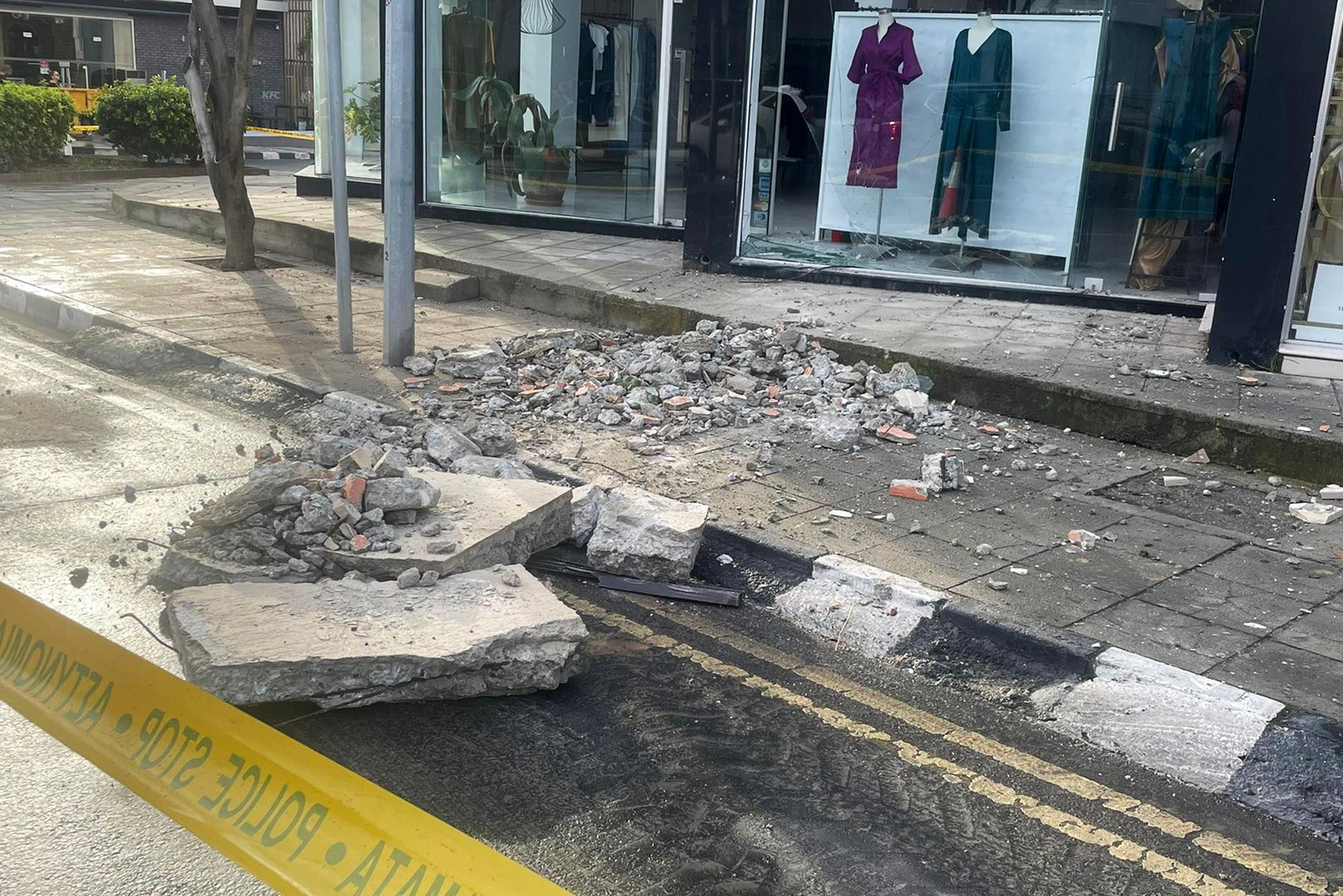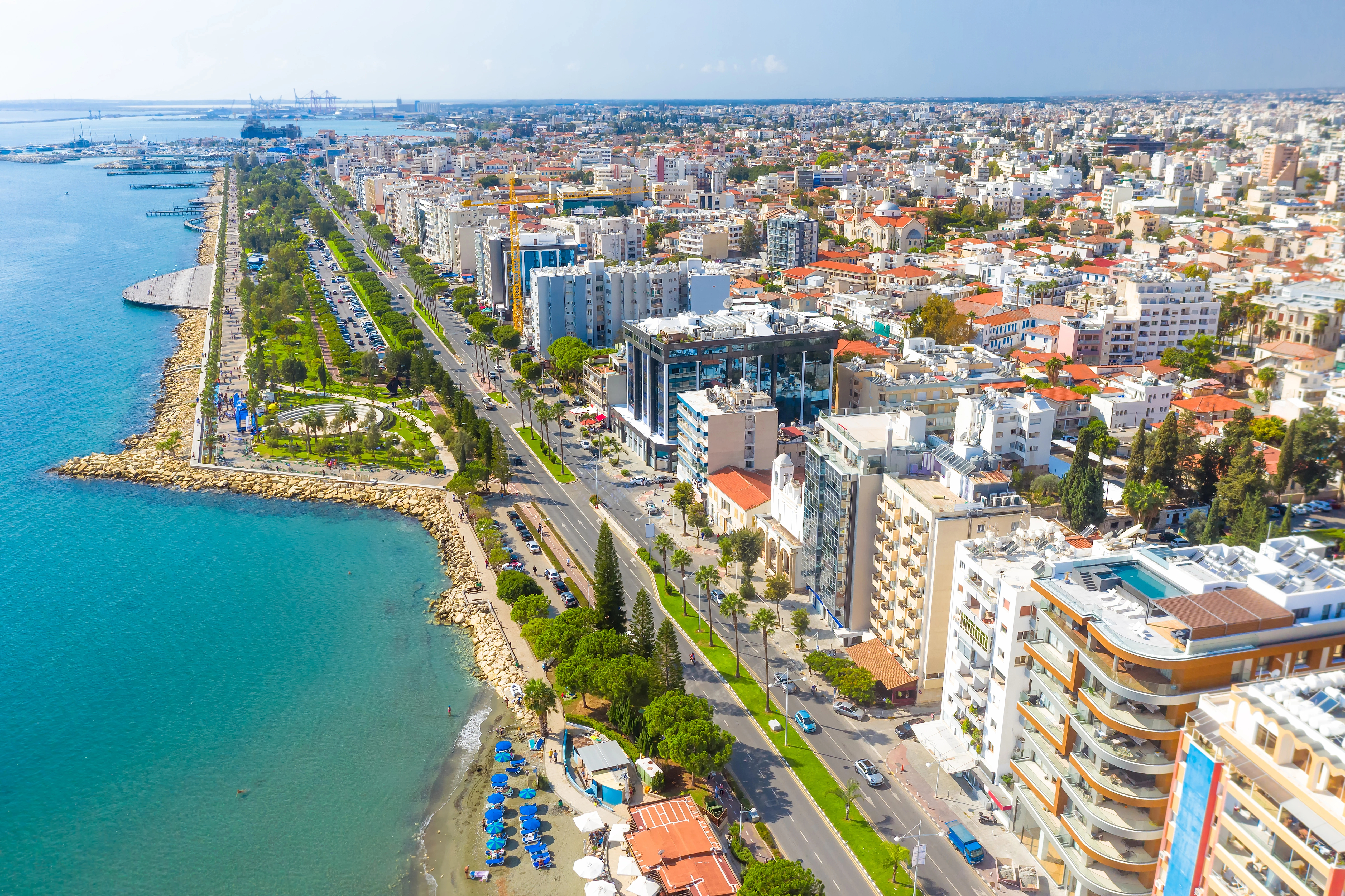Around 400 buildings in Limassol have received warning letters that they need repairs, while 130 have been declared dangerous, it emerged on Friday, hours after parts of a balcony collapsed overnight damaging parked vehicles underneath.
Similar incidents had happened in the city in December last year and in January this year.
From its records, the municipality said that 15 per cent of the 400 that were issued warnings had immediately taken measures to repair, 25 per cent had informed local authorities of their intention to carry out repairs but 60 per cent had not responded at all.
“And the problems are escalating,” the municipality said.
Limassol Mayor Yiannis Armeftis went to the scene of the latest incident in the Neapolis area around 10pm on Thursday night after chunks of weathered concrete had broken off from a fourth-floor balcony and hit the cars below, fortunately with no injuries.
A municipality crew had been dispatched to clean up in the aftermath so that an inspection could begin immediately Friday morning.
“It is important to record that an inspection of the specific building had been carried out by municipality personnel and that warning letters were sent to all owners and the management committee for immediate repair and maintenance,” the Limassol municipality said in a statement later on Friday.
Armeftis, speaking to CyBC earlier in the day, re-issued calls for legal action from authorities.
The flat owners had been served with warnings from the municipality in 2019 and 2021, he said.
“The required repairs were assessed at a cost of around €10,000 per flat owner for the 40 flats in the building,” he said, but some owners had complained they could not afford to pay so the matter was dropped. It was later reported that the building was owned by an overseas landlord.
Local authorities must be provided with ramped up legal powers to deal with dangerous buildings, Armeftis said, and the matter was a pressing one.
Problems with crumbling buildings constructed with sub-par materials in the 70s and 80s would only “become more numerous and acute” if drastic measures were not taken, Armeftis said.
The municipality said later on Friday the total of 400 buildings already warned included single-family homes, apartment buildings and commercial properties, all located within municipal boundaries.
According to the law, the municipality may impose an administrative fine of up to €20,000 and a daily fine of €200 on all owners who do not comply.
State funding to the tune of €500,000 to €1m had been discussed for repairs once the district administration (EOA) takes over from the municipality the task of managing the problem, the Limassol Mayor said.
However, the EOA take-over had been postponed twice and is now set for April 2025, leaving the municipality’s hands tied, Armeftis explained. The latter is currently limited to putting up warning signs, making announcements with lists of dangerous properties, and issuing fines.
The mayor underscored that the existing legislation hampers local authorities from intervening and urged for the executive and legislative powers to “create mechanisms to ensure safe buildings.”
He reiterated calls for regular inspections, similar to vehicle MOTs.
There are far too many buildings for the municipality to afford to repair and, at any rate, responsibility must be borne by owners, particularly those renting out properties at extremely favourable rates, the mayor said.
In addition to hazards caused by aging and negligence, owners also carry out illegal constructions, such as enclosing basements, which may cut off emergency exits or create other risks, he added.
Resorting to the courts and securing evictions from dangerous buildings is time consuming, Armeftis said, citing an example of a case which took three years.
“The municipality spent €1.5m on that building’s repair and is still trying to collect this money,” he said. They are allowed to recoup the money from the owners.
Just days ago, Interior Minister Constantinos Ioannou warned that hundreds of housing blocks in Cyprus were dangerously unmaintained to the point where they pose a hazard to residents and are a risk to public safety.
Ioannou said it is estimated that there are 30,000 communally-owned buildings across the island, which corresponds to approximately 200,000 residential units. Half the population lives in a communal building he said
The House is currently discussing amendments to the inadequate current legislation that is expected to better address the issue, the minister said.








Click here to change your cookie preferences